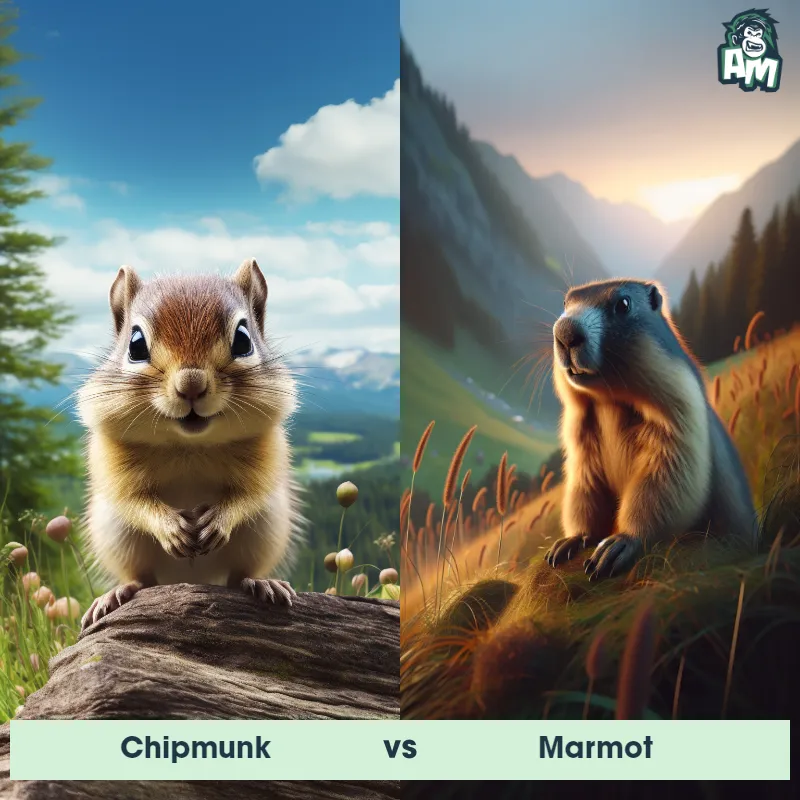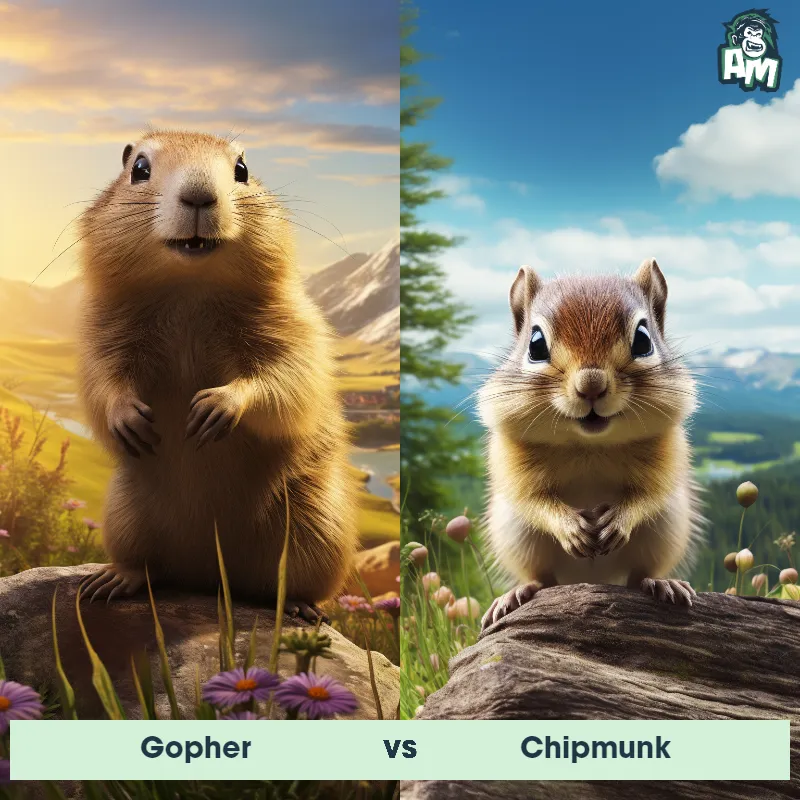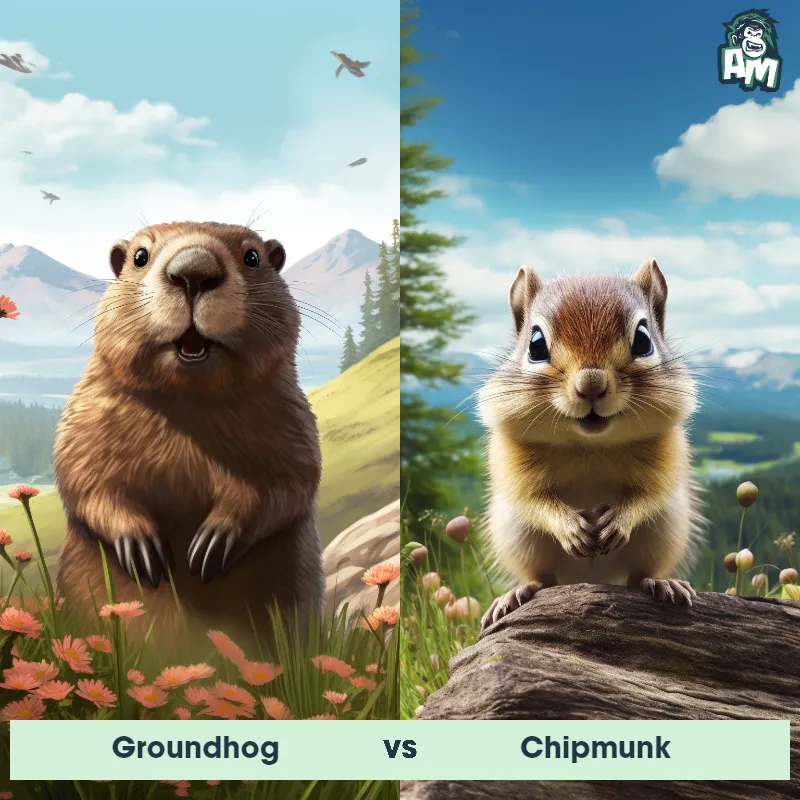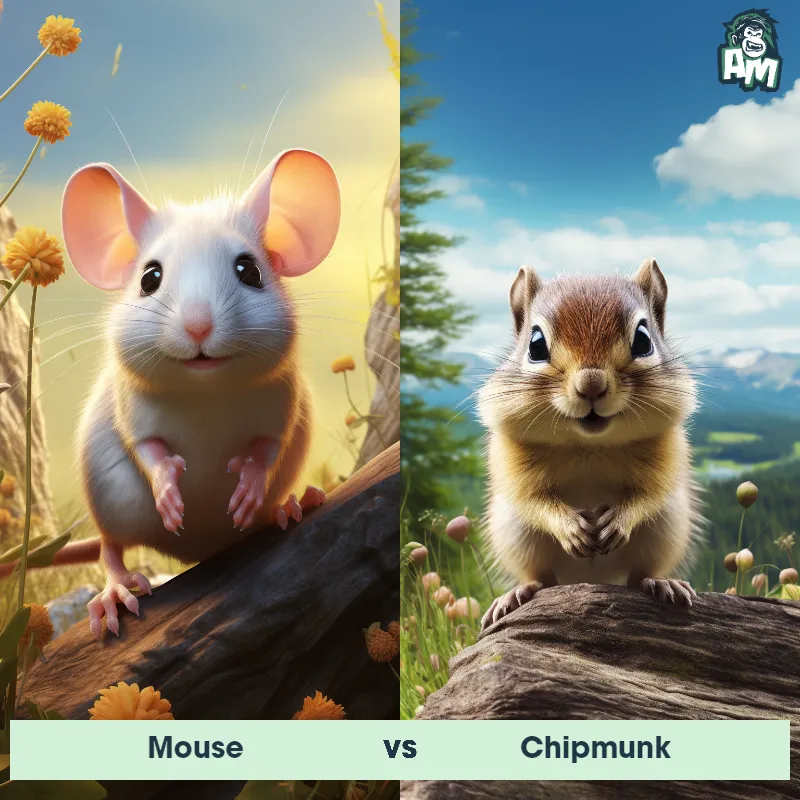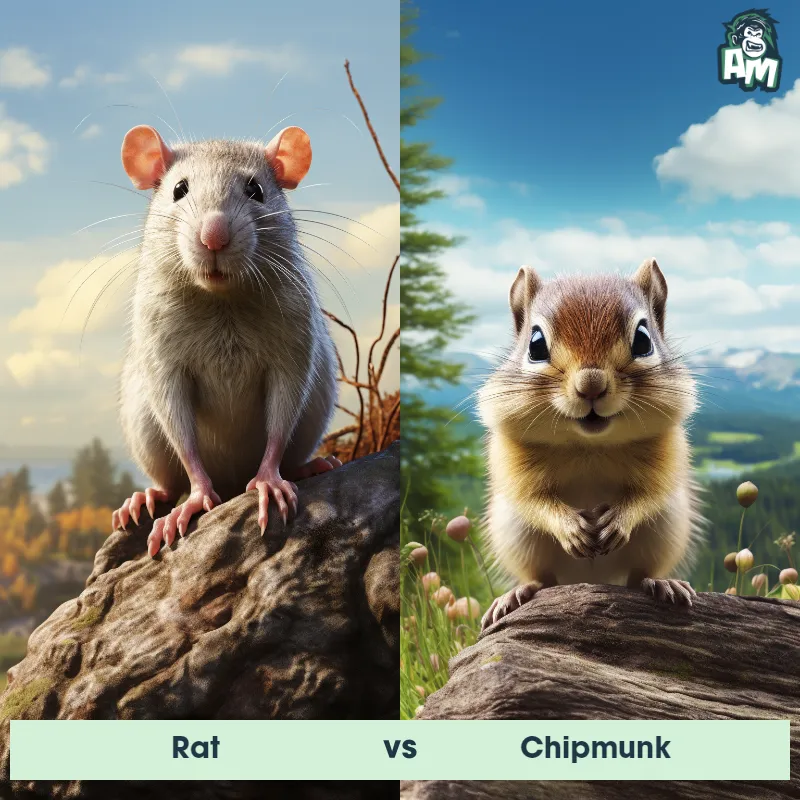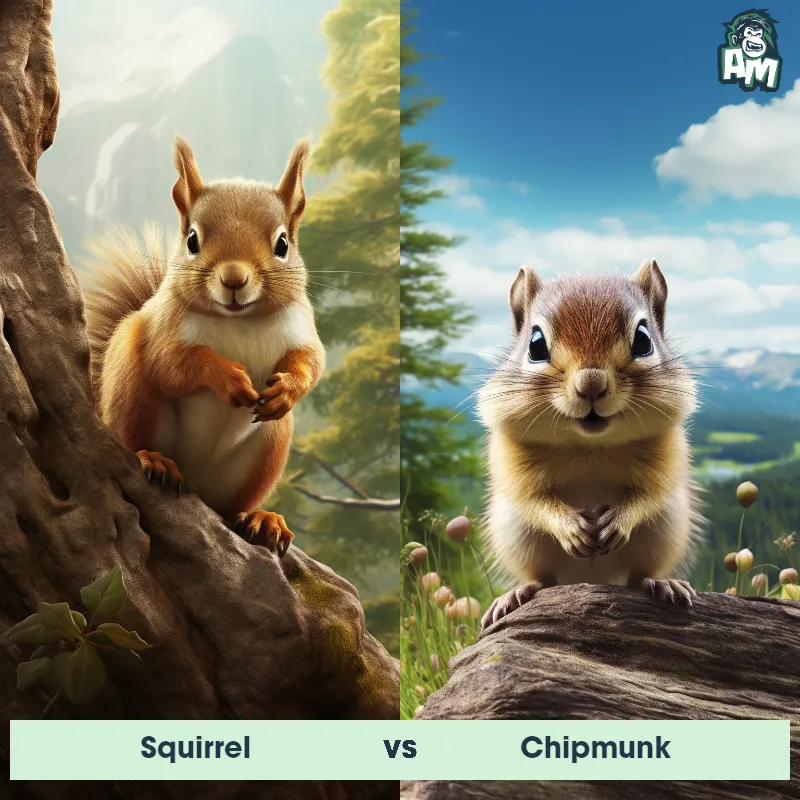The Chipmunk
The Chipmunk, also known as the Eastern Chipmunk, is a small rodent commonly found in North America. They are characterized by their small size, with an average length of 5 to 6 inches, and their striped fur patterns in shades of brown and gray. Chipmunks have large cheek pouches that they use to carry food, and their bushy tails help them with balance when climbing trees. They are active during the day and are known for their quick movements and agility, often scampering around in search of food and shelter.

| Chipmunk | |
|---|---|
| Size | 4-7 inches (10-18 cm) |
| Weight | 1-5 ounces (28-142 grams) |
| Speed | 21mph (34km/h) |
| Key Strength | Agility and Speed |
| Biggest Weakness | Small Size |
| Scientific Name | Tamias |
| Family | Sciuridae |
| Habitat | Forests, Woodlands, Gardens, Parks |
| Geography | North America, Asia |
| Diet | Omnivorous (Nuts, Seeds, Fruits, Insects, Bird Eggs) |
| Lifespan | 2 years - 8 years |

The Chipmunk
The Chipmunk, also known as the Eastern Chipmunk, is a small rodent commonly found in North America. They are characterized by their small size, with an average length of 5 to 6 inches, and their striped fur patterns in shades of brown and gray. Chipmunks have large cheek pouches that they use to carry food, and their bushy tails help them with balance when climbing trees. They are active during the day and are known for their quick movements and agility, often scampering around in search of food and shelter.
Fun Fact: Chipmunks can store food in their cheek pouches and carry up to three times the volume of their head, allowing them to transport large amounts of food to their burrows for storage.
| Chipmunk | |
|---|---|
| Size | 4-7 inches (10-18 cm) |
| Weight | 1-5 ounces (28-142 grams) |
| Speed | 21mph (34km/h) |
| Key Strength | Agility and Speed |
| Biggest Weakness | Small Size |
| Scientific Name | Tamias |
| Family | Sciuridae |
| Habitat | Forests, Woodlands, Gardens, Parks |
| Geography | North America, Asia |
| Diet | Omnivorous (Nuts, Seeds, Fruits, Insects, Bird Eggs) |
| Lifespan | 2 years - 8 years |
Chipmunk Matchups
We use AI to simulate matchups between the Chipmunk and other animals. Our simulation considers size, strength, and natural predatory behaviors to determine the most likely outcome.
Chipmunk: Diet, Predators, Aggression, and Defensive Behaviors
What do Chipmunks eat?
Chipmunks are omnivores and have a varied diet. They primarily consume nuts, seeds, fruits, and grains. Insect larvae, small insects, and even bird eggs are also part of their diet. Chipmunks have cheek pouches that they use to store food and carry it back to their burrows for consumption.
Do Chipmunks have any predators?
Yes, Chipmunks have several predators in the wild. Some of their predators include hawks, owls, snakes, foxes, weasels, and domestic cats. These predators hunt Chipmunks for food, and they rely on their agility and speed to escape being caught.
Are Chipmunks aggressive?
Chipmunks are generally not aggressive towards humans and tend to avoid confrontation. However, they can become aggressive towards other Chipmunks when competing for food, territory, or mates. This aggression can lead to fights and vocal displays of dominance.
Do Chipmunks fight?
Chipmunks are known to engage in fights, especially during the breeding season when competition for mates and territories is high. These fights can be intense and may involve biting, tail slapping, and vocalizations to establish dominance. The winner of the fight typically claims the right to mate with females in the area.
How do Chipmunks defend themselves?
Chipmunks have several defensive mechanisms to protect themselves from predators. They are excellent climbers and can quickly escape by climbing trees or shrubs. Chipmunks also have a keen sense of smell and hearing, allowing them to detect predators from a distance. In case of danger, they may emit high-pitched squeaks or chattering sounds to alert others of the threat.
What is the biggest weakness of Chipmunks in a fight?
Despite their agility and speed, Chipmunks are small and vulnerable to larger predators. In a fight, their size can be a disadvantage as they are easily overpowered by larger mammals or birds of prey. Chipmunks rely on their ability to escape rather than engage in direct physical confrontations to survive in the wild.
Fun Fact: While Chipmunks are primarily herbivores, they also have a carnivorous side and may occasionally eat insects, small birds, and bird eggs, making them omnivorous.
Fun Fact: Chipmunks communicate with each other using a variety of vocalizations, including chirps, trills, and chattering sounds, which enable them to warn others of potential threats or assert their territory.



